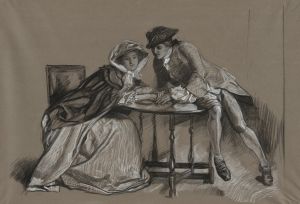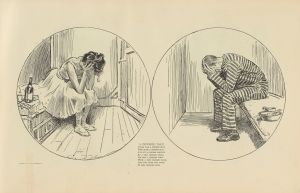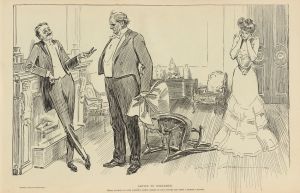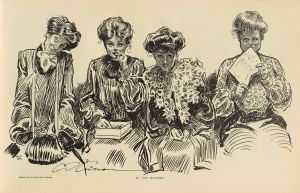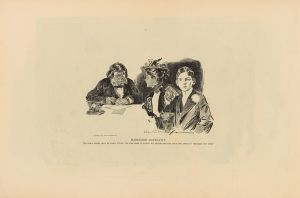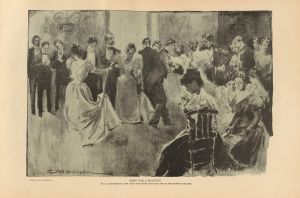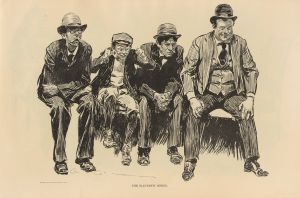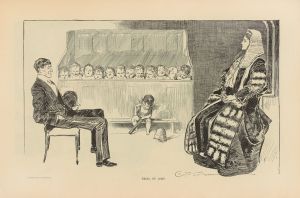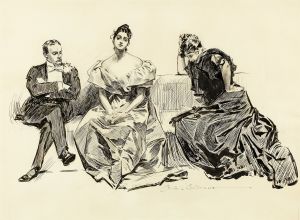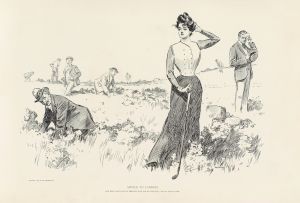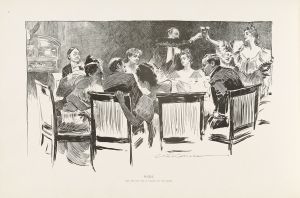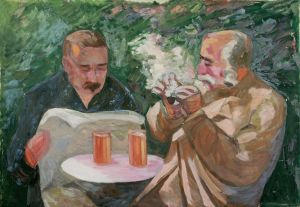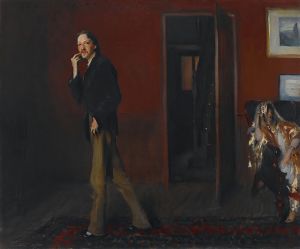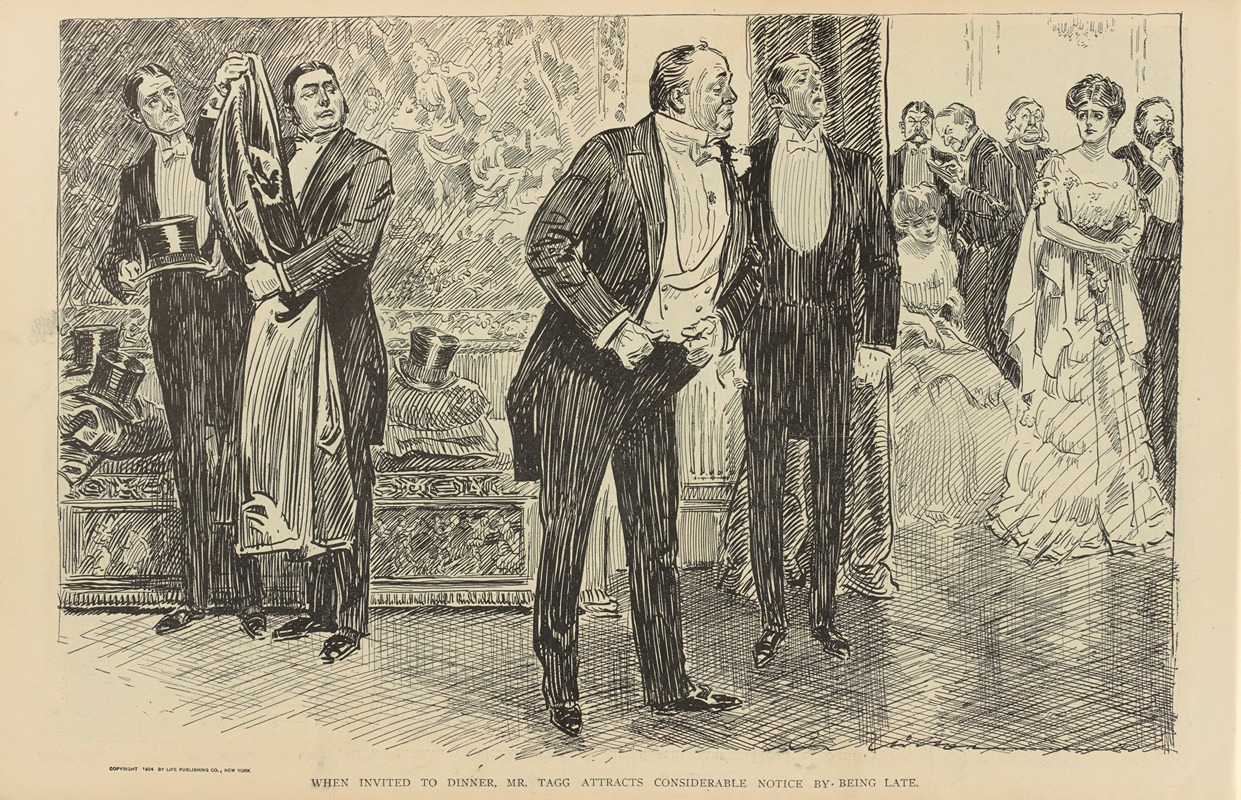
When invited to dinner, Mr. Tagg attracts considerable notice by being late
A hand-painted replica of Charles Dana Gibson’s masterpiece When invited to dinner, Mr. Tagg attracts considerable notice by being late, meticulously crafted by professional artists to capture the true essence of the original. Each piece is created with museum-quality canvas and rare mineral pigments, carefully painted by experienced artists with delicate brushstrokes and rich, layered colors to perfectly recreate the texture of the original artwork. Unlike machine-printed reproductions, this hand-painted version brings the painting to life, infused with the artist’s emotions and skill in every stroke. Whether for personal collection or home decoration, it instantly elevates the artistic atmosphere of any space.
Charles Dana Gibson was an influential American illustrator, best known for his creation of the "Gibson Girl," a representation of the ideal American woman at the turn of the 20th century. His work was widely published in magazines such as Life, Harper's Weekly, and Scribner's, and he became one of the most celebrated illustrators of his time. One of his notable works is the illustration titled "When invited to dinner, Mr. Tagg attracts considerable notice by being late."
This illustration is part of a series of satirical drawings that Gibson created, which often depicted social scenarios and commented on the manners and customs of the upper class during the Gilded Age. The Gilded Age, spanning from the 1870s to about 1900, was a period of significant economic growth in the United States, marked by a stark contrast between the wealthy elite and the working class. Gibson's illustrations provided a humorous yet critical lens on the behaviors and expectations of the affluent society.
"When invited to dinner, Mr. Tagg attracts considerable notice by being late" captures a moment of social faux pas, where the character Mr. Tagg becomes the center of attention due to his tardiness. The scene is set in an opulent dining room, with elegantly dressed guests seated around a lavishly set table. The expressions and body language of the guests convey a mix of surprise, amusement, and perhaps mild disapproval, highlighting the social importance placed on punctuality and decorum in such settings.
Gibson's work is characterized by its detailed line work and keen observation of human expressions and interactions. His ability to capture the nuances of social dynamics made his illustrations both entertaining and insightful. The humor in this particular piece lies in the exaggerated reactions of the guests, which serve to underscore the trivial yet significant nature of social etiquette during that era.
The illustration reflects the broader themes present in Gibson's work, where he often explored the roles and expectations of men and women in society. While the "Gibson Girl" series focused on the evolving image of women, other works like the Mr. Tagg illustration provided commentary on the behaviors and expectations of men within the same social circles.
Gibson's illustrations were not just artistic expressions but also cultural commentaries that resonated with the public. They offered a mirror to society, reflecting both its virtues and its absurdities. His work remains an important part of American art history, providing insight into the social fabric of the late 19th and early 20th centuries.
Overall, "When invited to dinner, Mr. Tagg attracts considerable notice by being late" is a testament to Charles Dana Gibson's skill as an illustrator and his ability to capture the essence of his time with wit and precision. His legacy continues to influence artists and illustrators, and his works are still appreciated for their artistic merit and historical significance.





